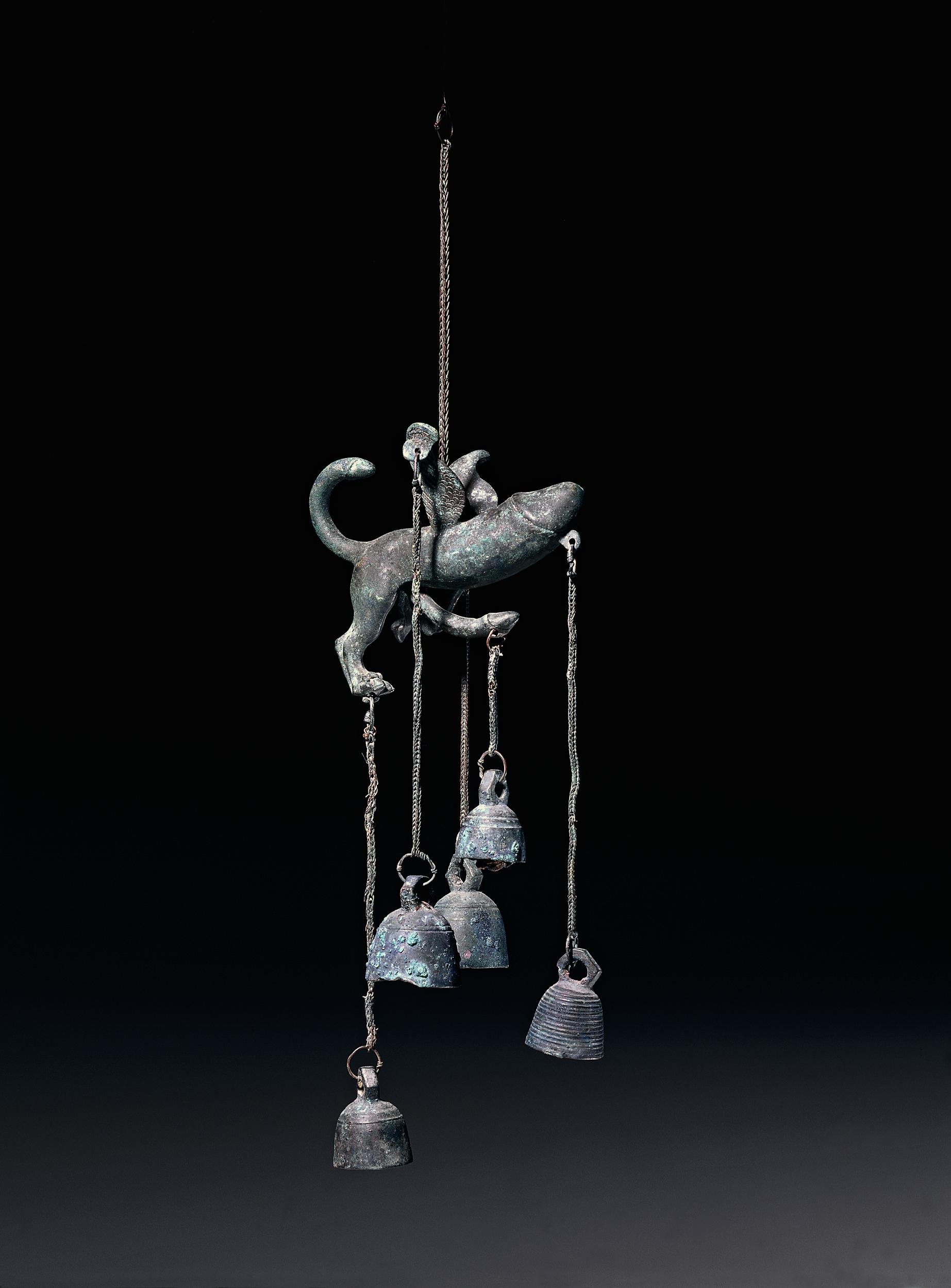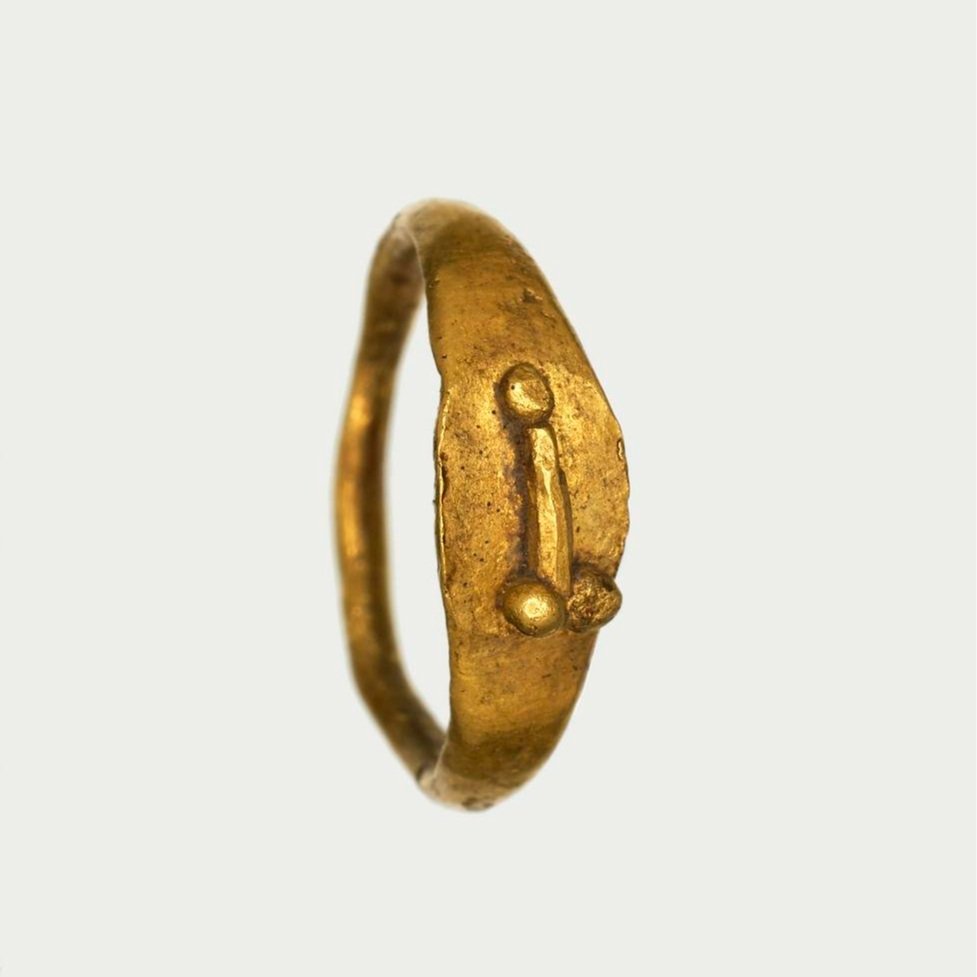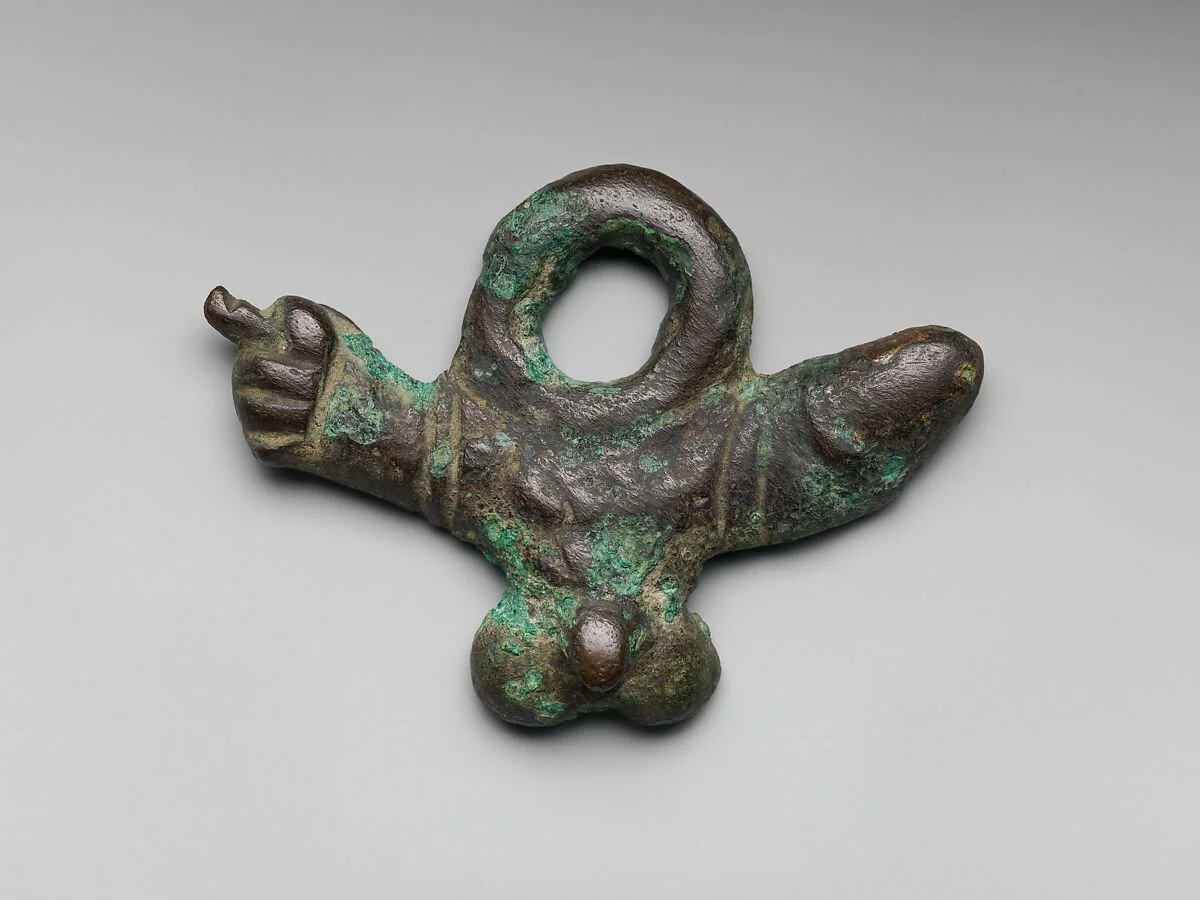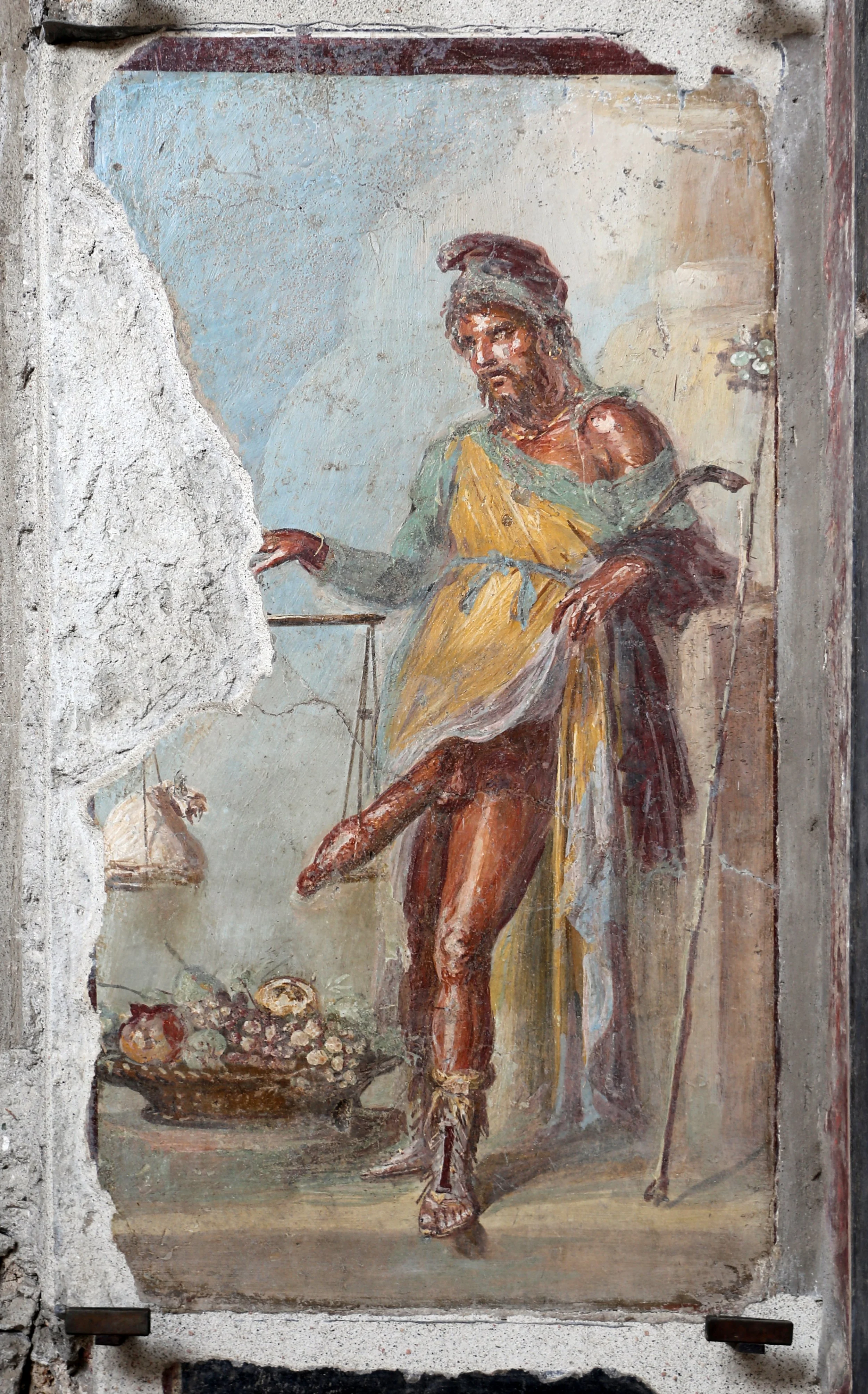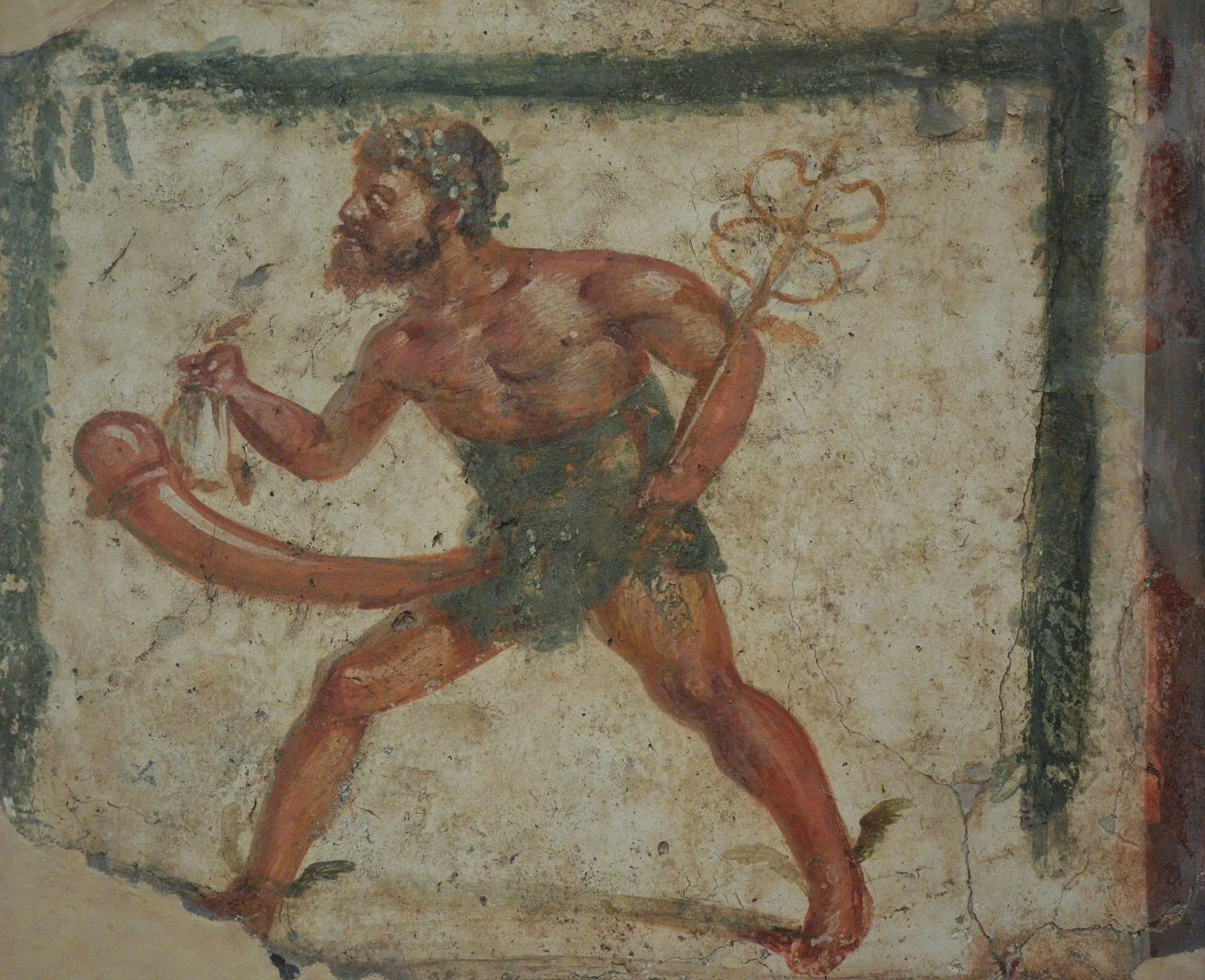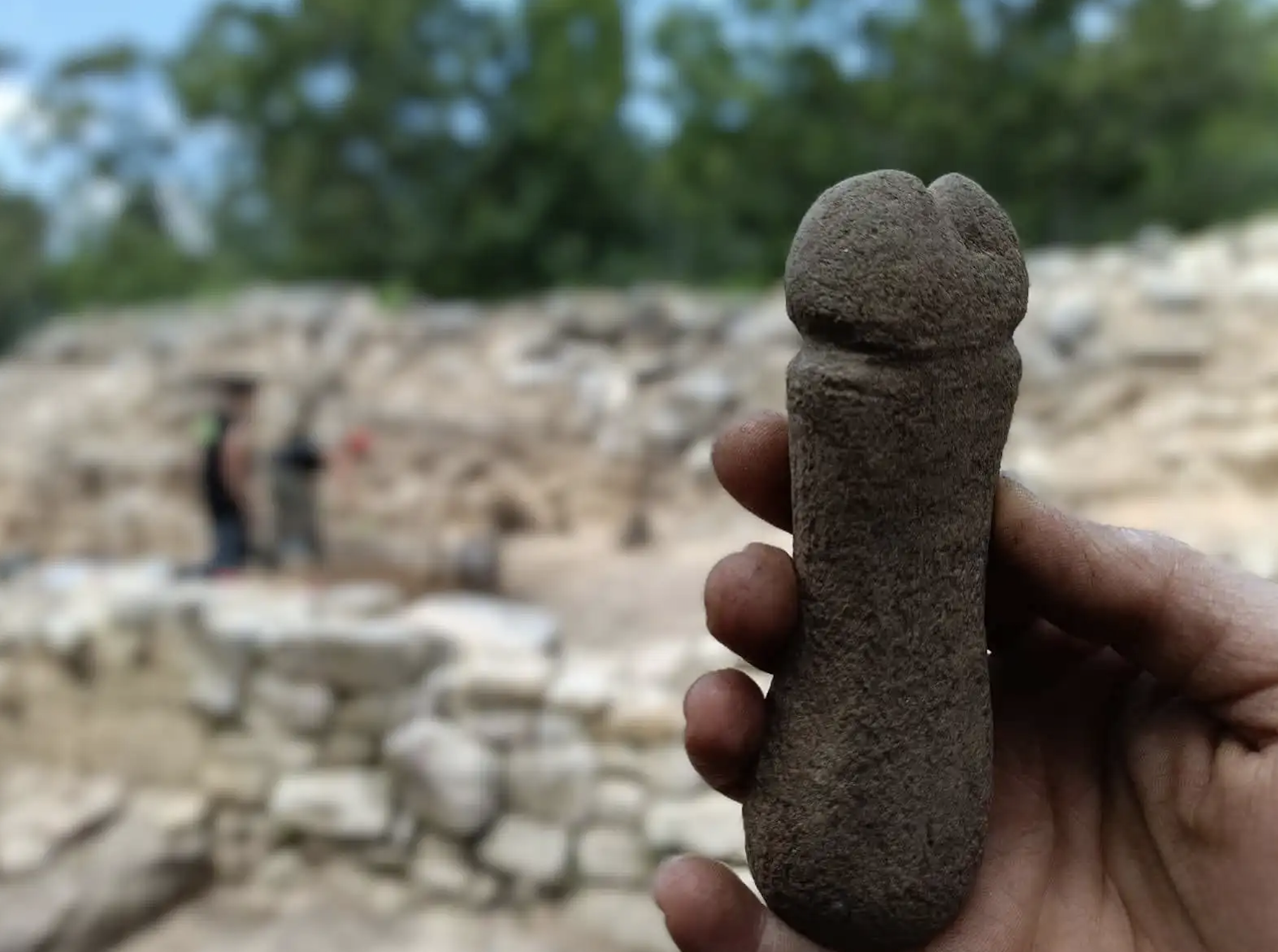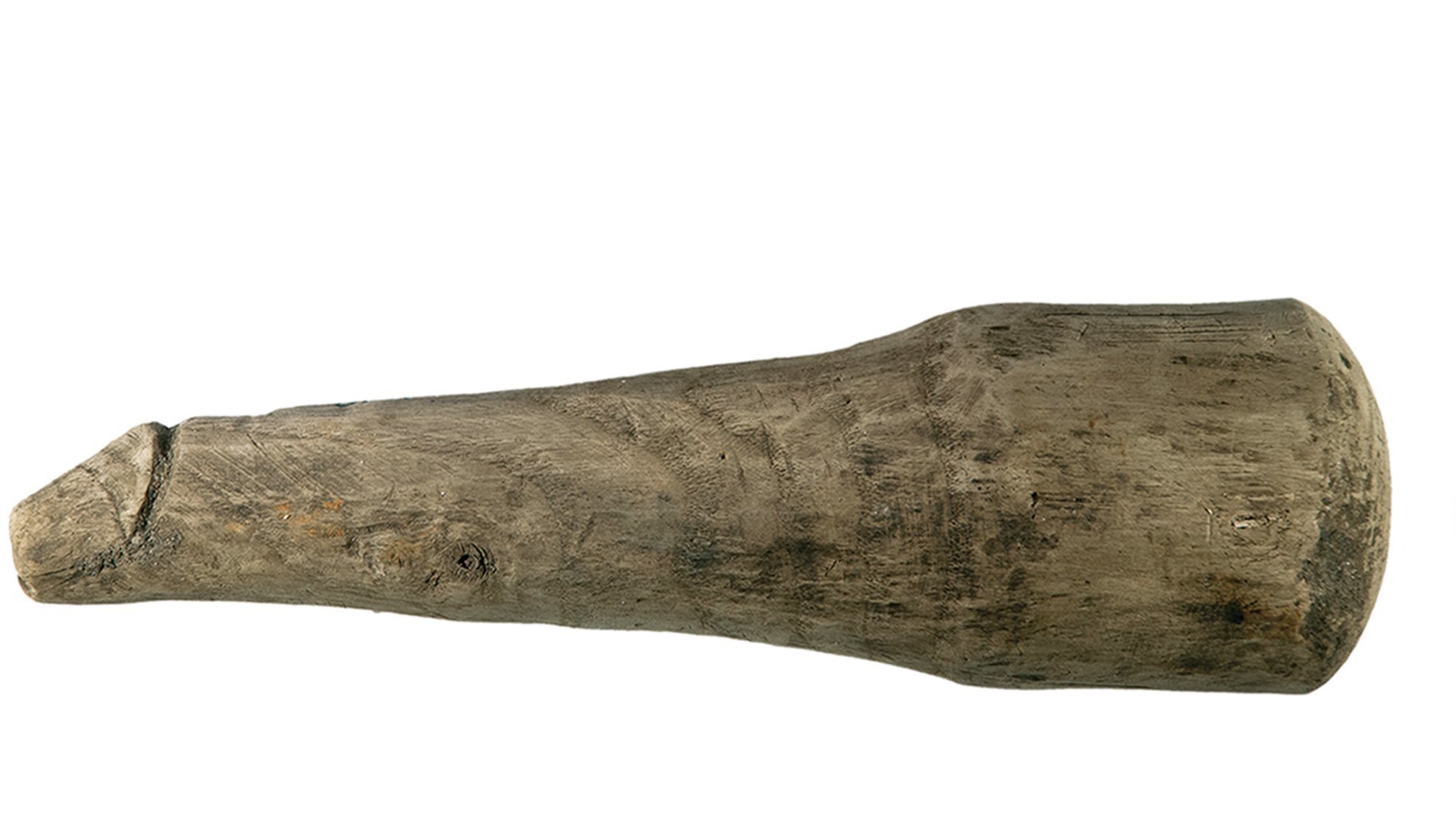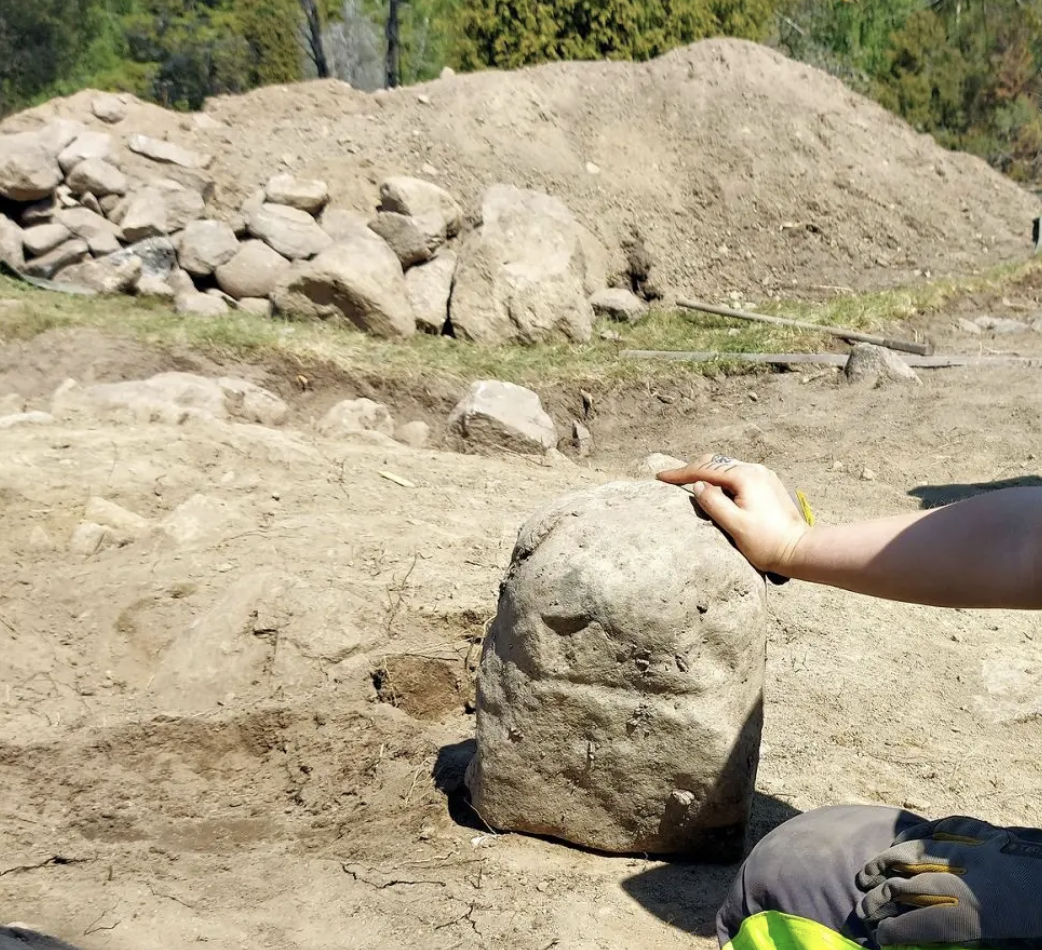Touch Wood: The Roman Phallus as a Lucky Charm
By Han Parker
People are often shocked at the sexually explicit nature of Ancient Roman art. Anyone who has visited the Secret Museum (Gabinetto Segreto) in the National Archaeological Museum in Naples will know: the room is filled with erotic paintings and statues. It was even deemed so inappropriate by 19th-century audiences that in 1849 the doorway was bricked up. Most of these artworks show figures engaging in sexual activity, however, when thinking about the phallus in an ancient context, it becomes clear that it had many other functions. So, why is the phallus an important symbol in art?
The Roman phallus was used as a lucky charm and as a way to ward off evil (which is known as apotropaic). Romans wore the symbol on jewellery, such as rings like this beautiful gold example from the British Museum, dated to between the 1st and 3rd centuries AD, that would have been worn by a young boy to protect him from the evil eye. The good luck charm wasn’t just utilised by men, with women wearing hair pins ornately decorated with phalluses to adorn their tresses. Pottery was another common medium for the phallus to be depicted. Wind chimes, known by the Romans as tintinabulum, were hung up in various places across the household. The bells would ring and dispel evil. Popular locations were thresholds between rooms, where it was necessary to prevent evil from entering and positivity escaping.
Fresco of Priapus, House of the Vettii in Pompeii, 1st century AD, (Image: Wikimedia Commons).
The most famous image of the Roman phallus comes from none other than Pompeii, the city tragically frozen in time by the volcanic eruption of Mount Vesuvius in 79 AD. The fresco of the god Priapus was located in the entrance of the House of the Vettii, one of the largest and most lavish houses in the city. It was owned by the Vettii brothers, two freed slaves who became successful merchants. Recent scholarship has debated this interpretation of the brothers identity, noting that there is no concrete evidence on the relationship between them. In any case, the pair had extravagant taste, and their home was filled to the brim with brightly painted artworks, including paintings, statues and mosaics. In Greek mythology, Priapus was a minor fertility god, who became immensely popular with the Romans. Alongside this role, his domains included agriculture, the protection of gardens (hence the frequency of imagery evoking him in these spaces), and he was associated with wealth and abundance.
As explained by John R. Clarke in his book, Looking at Laughter: Humour, Power, and Transgression in Roman Visual Culture, 100 B.C. – A.D. 250, the painting demonstrates the triple prosperity that the god will give to both the household and its visitors. Most striking of these is financial prosperity. Reflected by the weighing of his comically oversized and erect phallus which he is weighing against a sack of money. The scale is balanced, showing the wealth of the owners of the home. Secondly, the god’s rustic ties are shown through the woven basket of perfectly ripe fruit and vegetables placed at his feet. These ensured the success of the inhabitants’ agricultural pursuits, which included their business selling wine (this is also reiterated in another room of the House of the Vettii, the so-called Room of the Cupids, where a frieze depicting the wine-making process adorns the walls). The final type of prosperity promised by the god is personal. The huge phallus promises literal fertility, hence the sacrifices made to him by Roman men. The location of the painting was intentional, at the threshold of the home. Perhaps people stroked the image for good luck as they passed through.
Fresco of Mercury, Bakery at IX,12,2, 1st century AD, (Image: Wikimedia Commons).
Done in the fourth style of Pompeian painting, the piece was executed using the fresco technique, during which the artist applied the pigments directly onto wet plaster. This method required the painter to work quickly and in small patches before each section dried. The painting was paired with a statue of the same figure, which would have originally been positioned in the garden. This statue functioned as a fountain, with water pouring out of Priapus’ phallus. This novel image drew upon the Roman belief that certain bodily fluids had powers to combat the evil eye.
Phallic imagery like this was not reserved for Priapus. One humorous fresco from a bakery in Pompeii shows the messenger god Mercury with a caricatured phallus. Alongside this seemingly out of place addition, the god has the familiar attributes of winged sandals, a caduceus or wand, and a coin purse. Here, his erect phallus ensures financial success for the bakery owner, and perhaps acted as a selling point for his goods!
There have been a number of recent archaeological discoveries of phallic artefacts from various eras. These include a six inch medieval stone phallus from Spain which was used to sharpen weapons, a Viking Age carved marble phallus from Sweden, and the renowned Roman wooden phallus from Vindolanda that hit global headlines in February. Although modern audiences find this imagery entertaining and sometimes shocking, it is important to better understand the other meanings associated with phalluses across history.
Han Parker is an ancient art historian and content creator.
June 2023
